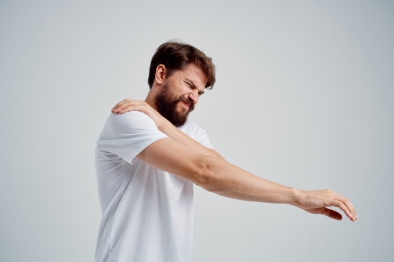In the pursuit of a transformative approach to sculpting the body, enhancing core strength, elevating athletic performance, and even alleviating stress, Pilates emerges as a beacon of potential. Over the last couple of decades, this distinctive mind-body exercise method has surged in popularity, captivating individuals seeking a holistic path to wellness. But amidst the buzz, the question lingers: What precisely is Pilates, and how did it come into existence?
The Origins and Evolution of the Pilates Method
Pilates was developed in the early 20th century by a German physical trainer named Joseph Pilates. Born in Germany in 1880, Joseph was a weak and sickly child who was determined to strengthen his body.
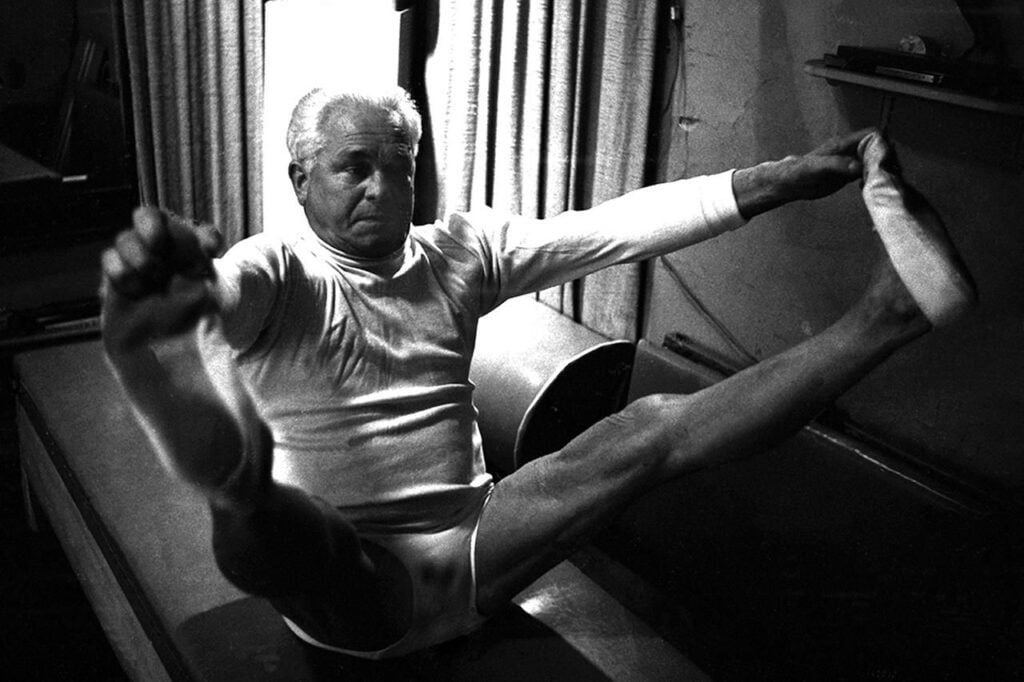
Joseph rigorously studied anatomy and the dynamics of human bodily motion. He practiced yoga, Zen meditation, and ancient Greek and Roman exercise regimens. During World War I, Joseph worked to rehabilitate injured soldiers and further developed his concepts for physical and mental conditioning.
Joseph’s method emphasized proper alignment, core strength, flexibility, breath control, and intense mental focus during exercise. He strongly believed that integrating mind and body through precise, controlled movements was critical for overall health and well-being.
In the 1920s, Joseph immigrated to the United States and opened a Pilates fitness studio in New York City. It quickly attracted devoted followers, especially among dancers of the New York City Ballet. They turned to Pilates for injury recovery and to improve their form and performance.
Over the decades after Joseph’s death in 1967, Pilates gradually gained wider recognition, especially among dancers and fitness enthusiasts. By the 1990s, there was a major Pilates resurgence as celebrities like Madonna and athletes embraced it for sculpted bodies and peak fitness. Studios popped up nationwide to meet demand.
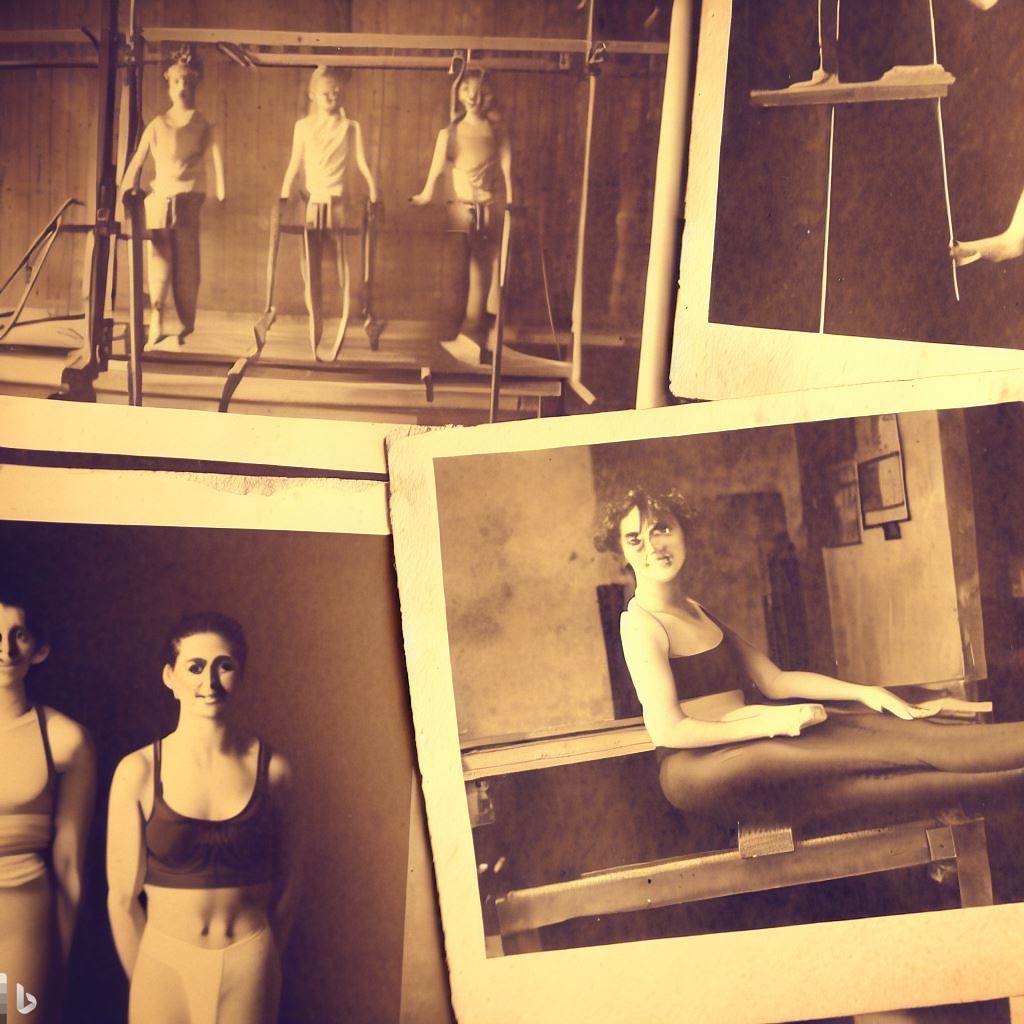
Today Pilates is practiced worldwide in gyms, physical therapy clinics, and dedicated studios as both a fitness and rehabilitation activity. Contemporary Pilates has expanded far beyond Joseph’s original 34 mat exercises to include advanced apparatus and hundreds of movements.
However, the core principles of spinal alignment, breath, flowing motion, and mind-body unity at the heart of Joseph’s original Pilates method remain unchanged nearly a century later.
The 6 Key Principles That Define All Pilates Exercises
Pilates focuses on integrating the mind and body through purposeful, controlled motions while maintaining proper alignment, posture, and breathing patterns.
These six key principles shape the foundation of all Pilates exercises and training:
Centering: Engaging the core muscles of the back, abdomen, and pelvic floor to stabilize the body. The powerhouse core provides a solid functional base.
Concentration: Fully focusing mentally on each subtle movement and precisely contracting specific muscles; not allowing the mind to wander.
Control: Deliberately controlling all motions with muscular engagement rather than relying on momentum or gravity. Smooth, flowing tempo.
Precision: Emphasizing quality and form over quantity of repetitions; precise anatomical placement of the head, spine, and limbs.
Breath: Coordinating breathing with movement; exhaling on exertion, inhaling on release and elongation.
Flow: Seamlessly transitioning between positions and exercises in a smooth, graceful sequence. The entire body works as one uniform system.
Mastering these foundational Pilates principles while performing the exercises develops incredible strength, balance, alignment, control, and more. The result is a uniformly conditioned body and an intensely focused mind.
The Myriad Whole-Body Benefits Offered by Pilates
Regularly practicing Pilates provides a myriad of impressive physical and mental benefits:
Core Strength: Every Pilates exercise intensely strengthens the core stabilizing muscles of the abdominals, lower back, hips, glutes, and pelvic floor. The muscles are continually drawn inward and engaged. Over time, Pilates sculpts a strong, defined core.

Improved Posture: The Pilates principles of spine elongation, shoulder girdle retraction, and proper anatomical alignment establish strong posture awareness. Gentle posture corrections train the body to stand taller with poise.
Increased Flexibility: The sustained, controlled stretches combined with full ranges of motion enhance complete body flexibility. Tight hamstrings, hips, and shoulders gain length while spine and joint mobility is restored.
Total Body Muscle Conditioning: The continuous smooth motions challenge all the body’s muscles to work in tandem in a balanced, integrated way. Pilates sculpts long, lean muscles without bulk.
Enhanced Joint Health: Building balanced strength and flexibility around the joints provides dynamic stabilization. This decreases wear and tear on joints, helping prevent injuries and conditions like osteoarthritis.
Improved Balance and Coordination: The proprioceptive system is honed through the dynamic balancing, motor control, and spatial orientation required in Pilates exercises. Enhanced balance decreases the risk of falls and improves everyday movement.
Mind-Body Connection: The intense mental concentration during Pilates brings conscious awareness to muscle engagement and movement. This creates new mind-muscle connections. The mind-body harmony achieved flows into everyday life off the mat.
Stress Relief and Relaxation: The use of controlled breathing techniques combined with mental focus elicits a relaxation response. Pilates calms the mind, reduces tension, boosts mood, and rejuvenates.
Regular Pilates provides whole-body conditioning that realigns posture, strengthens the core, balances the body, and rejuvenates you from the inside out – both physically and mentally.
The Main Types of Pilates Exercises and Techniques
Pilates can be done on a mat or using specialized apparatus equipment. There are several categories and styles of Pilates exercises:
Mat Exercises
Also called floor exercises, these are done on a padded exercise mat without equipment. Mat exercises like the Hundred, Roll Up, Single and Double Leg Stretches, Teaser, and Side Kick series target the abs, back, and hips.
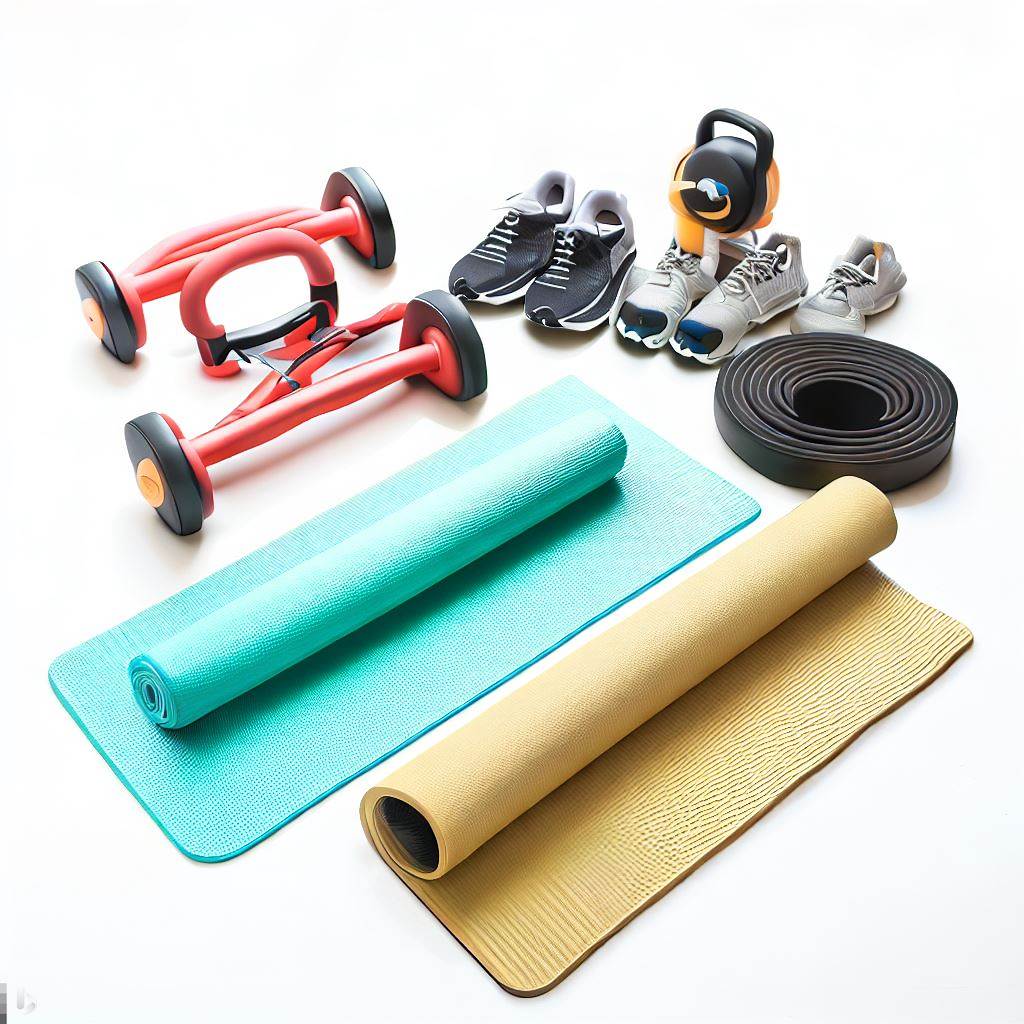
Equipment-Based Exercises
Specialized Pilates apparatus provides adjustable spring resistance and assisted support for safe, targeted training:
- Reformer – Sliding carriage platform with adjustable springs for resistance training. Allows spinal articulation and core engagement.

- Cadillac – Table with a frame and springs/straps overhead. Allows advanced stretching and strengthening in suspended positions.
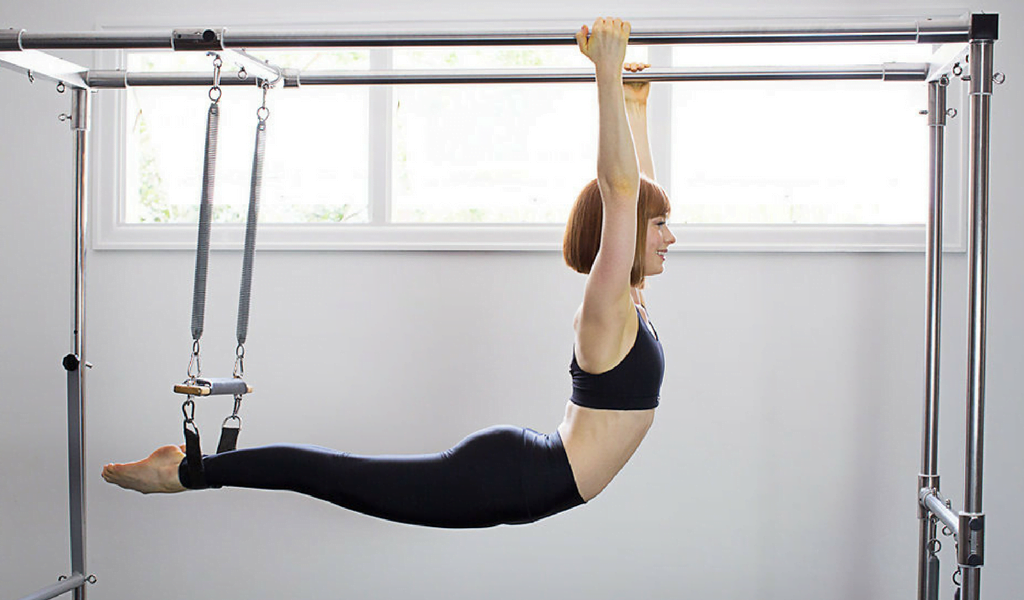
- Wunda Chair – Cushioned seat with foot pedals, springs, and elastic bands attached. Targets legs, core, and arms.
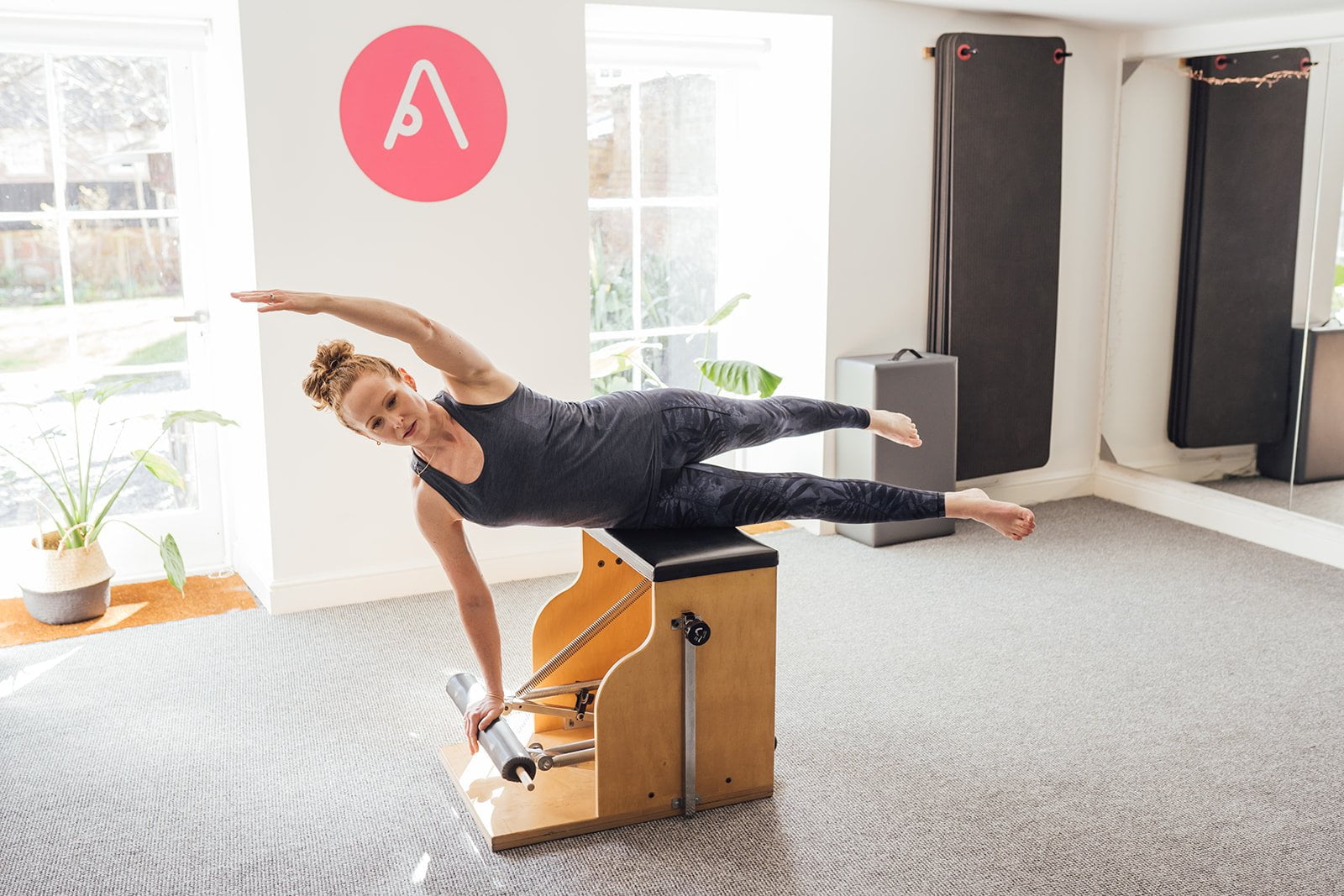
- High “Electric” Chair – Raised seat with rotating pole and springs for arm and leg movements to build strength.

- Ladder Barrel – A cushioned platform that can be attached to a rolling barrel strengthened by rungs. Used for abdominal conditioning.

- Additional equipment like rotating discs, magic circles, and weighted poles.
Cardio Exercises
More vigorous, faster-paced aerobic Pilates exercises like jump board routines, circuit training sequences, and modified rowing motions make Pilates suitable for cardio conditioning.
Balance Exercises
Moves performed on the Pedipole, stability balls, balance boards, and inflatable discs improve proprioceptive skills while challenging core muscles.
With endless exercise options using mats or apparatus, Pilates training can be adapted for any fitness level or therapeutic goal.
How Pilates Compares To Yoga – Similarities and Differences
While yoga and Pilates are both considered mind-body exercise regimens, they have different origins and areas of emphasis:
- Roots: Yoga has ancient spiritual and philosophical roots originating in India while Pilates is a modern physical conditioning method developed in the Western world.
- Intensity: The pace of yoga tends to be slower with more static passive stretching while Pilates involves continuous active resistance and engagement.
- Core Activation: Pilates maintains constant core engagement throughout movements whereas yoga focuses on linking breathing with flowing sequences of poses.
- Equipment Reliance: Yoga requires no equipment and can be learned from books or videos. Pilates relies on specialized apparatus and qualified instruction for optimal benefit.
- Mind-Body Intention: The intention of yoga is inner awareness and spiritual transformation compared to Pilates’ primary goal of physical strength, flexibility, and coordination.
While yoga and Pilates share similarities in promoting mindfulness, flexibility, proper breathing, and postural alignment, yoga provides a deeper mind-body connection while Pilates offers more intense physical conditioning – making them perfectly complementary.
Who Can Benefit From Practicing Pilates?
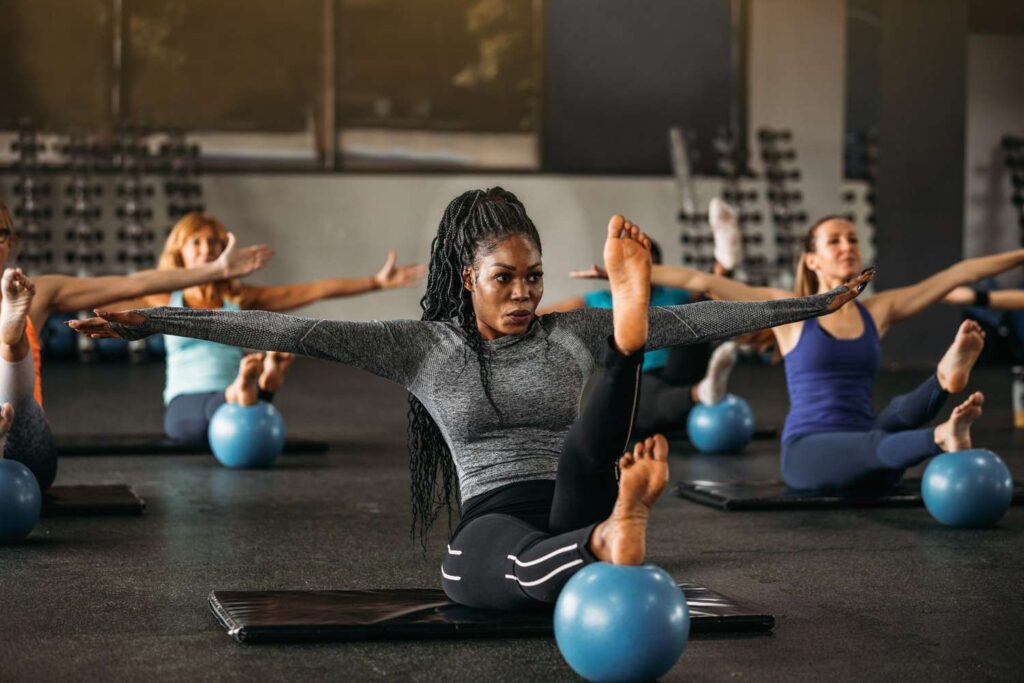
Due to its adaptable, customizable nature and blend of strength and flexibility training, Pilates is suitable for just about everyone. Here are some populations who can benefit:
- Beginners: Pilates is ideal for novices seeking to develop core strength and balanced, full-body conditioning without high impact or athletic moves. The gentle but challenging motions are easy to modify.
- Athletes: Pilates enhances athletic performance, power, stamina, and precision while preventing injuries by strengthening connective muscles. It’s highly complementary to all sports.
- Dancers: Dancers use Pilates to develop the core control, posture, balance, and alignment integral to excelling in their craft and preventing dance injuries. Many advanced moves mimic dance.
- Older Adults: Pilates improves mobility, joint flexibility, coordination, balance, and bone density – extremely beneficial for active aging. The exercises can be low-impact yet challenging.
- Injured/Post-Rehab: Pilates stabilizes joints, facilitates injury recovery, and safely regains function after orthopedic injuries, surgeries, or conditions like herniated discs. The movements are controlled and gradually progressive.
- Pre & Postnatal Women: Pilates strengthens the core and pelvic floor muscles essential for pregnancy, labor, and postpartum recovery. The gentle motions prevent abdominal strain.
- General Fitness: Pilates provides full-body conditioning with invaluable cross-training benefits. Enthusiasts love the mind-body focus and continually progressing skill mastery.
With personalized programming, Pilates is appropriate for nearly every age and fitness background.
The Transformational Physical and Mental Results You Can Expect
If practiced regularly 1-3 times per week, the benefits of Pilates quickly accumulate:
- Within 2-4 weeks: Improved core strength, muscle tone, balance, coordination, and flexibility
- Within 2 months: Noticeable improvements in posture, body awareness, mind-body connection, and precision of motion
- Within 4-6 months: Defined core muscles, strong lean physique, reduced aches and pains, increased body control
- Within a year: A strong, realigned posture and physique along with an integrated sense of mind-body well-being maintained through ongoing practice

The more regularly you practice Pilates, the greater and faster you will experience its transformative effects. But even occasional practice yields valuable benefits.
10 Tips to Effectively and Safely Incorporate Pilates Into Your Routine
Ready to start adding Pilates classes or exercises into your current workout regimen? Here are 10 tips to get going safely and effectively:
- Take beginner mat classes to learn proper form and avoid injury before progressing to equipment classes.
- Schedule Pilates sessions or home practice times at least weekly to make steady progress in mastering the nuanced techniques.
- Focus fully on controlling each subtle movement with proper breath pattern and precision of motion. Avoid rushing through exercises.
- Invest in a few essential pieces of starter equipment like resistance bands, a magic circle, and a stability ball to train at home.
- Start by adding Pilates exercises to your current regimen 1-2x a week for cross-training benefits.
- Stick with the challenging mental focus and mindfulness aspects – it creates invaluable mind-body connections.
- Use imagery of a long spine and strong core activation to achieve ideal postural alignment.
- Progress slowly from introductory classes to more intense workouts to allow your body to adapt without overtraining.
- Practice recommended Pilates exercises at home on your off days for deeper learning. Follow online or DVD guidance.
- Give it time – allow at least 6 weeks to feel proficient with Pilates movements and experience subtle cumulative changes.
Trying Pilates allows you to experience its unmatched benefits firsthand. Let your individual needs and goals determine how you incorporate them into your fitness routine.
Should You Try Pilates? Weighing the Pros and Cons
As you can see, regularly practicing Pilates offers immense whole-body and mind conditioning effects. But how do you decide if embarking on the Pilates path is right for you? Consider some key pros and cons:
Pros:
- Unparalleled full-body toning, flexibility, and strength training with regular practice
- Develops incredible core strength and a long, lean “Pilates body”
- Improves alignment, posture, mobility, balance, and joint stability
- Enhances athletic performance, injury prevention, and precision
- Fosters body-mind awareness, mindfulness, and stress relief
- Appropriate for any age and fitness level from beginner to advanced
- Endless exercise options keep workouts varied and challenging
Cons:
- Requires instruction to learn proper form and avoid injury
- Necessitates mental focus and patience to master the nuanced techniques
- Expect a learning curve to coordinate breathing properly with motions
- Classes can be expensive without home equipment for solo practice
- Progress in developing true mind-body integration takes dedication
- Risk of overworking core muscles and straining the lower back
While mastering Pilates requires committed practice, the benefits to body, mind, and spirit are boundless. Release stress, reconnect with your body, and restore balance with Pilates!
Key Reasons Pilates Is Worth Exploring for New Fitness Possibilities
In summary, here are the top reasons Pilates is worth trying:
- It fuses physical strengthening and flexibility with meditative mindfulness through key principles.
- Offers unparalleled full-body sculpting and posture-improving training.
- Uses customized mat and equipment-based workouts to keep challenging your body.
- Suitable for any age or fitness level from newbies to professional athletes.
- Yields both incredible physical transformations and mental/emotional benefits.
- The versatility of Pilates accommodates individual abilities and needs.
If becoming stronger, leaner, centered, aligned, and wholly integrated sounds appealing, add Pilates to start realizing your body’s full potential from the inside out.
FAQs
[faq question=”Q: How often should you do Pilates?”] A: It is recommended to practice Pilates 1-3 times per week for the best results. Even once weekly provides benefits. The more regularly you do Pilates, the faster you will experience its transformative effects.[/faq]
[faq question=”Q: Is Pilates good for beginners?”] A: Yes, Pilates is excellent for beginners. The exercises can undergo modification for all levels while maintaining a low-impact nature. The focus is on core strength vs cardio, making it gentle. Taking beginner classes teaches proper form.[/faq]
[faq question=”Q: What is the difference between yoga and Pilates?”] A: Yoga focuses more on flexibility and meditation while Pilates emphasizes core strength, muscle tone, and precision of movement. Pilates training uses more equipment. The two complement each other well.[/faq]
[faq question=”Q: How many types of Pilates are there?”] A: There are mat Pilates and equipment-based Pilates using the reformer, Cadillac, Wunda chair, and more. There are also cardio Pilates and Pilates classes focused on balance training. Exercises can be done on various apparatus.[/faq]
[faq question=”Q: Is Pilates safe during pregnancy?”] A: Yes, Pilates is very safe and beneficial during pregnancy. The core strengthening helps prepare for labor. Special prenatal classes modify exercises to accommodate a pregnant woman’s changing body.[/faq]
[faq question=”Q: Will Pilates give me a flat stomach?”] A: Consistent Pilates will strengthen and tone your core muscles, giving definition to the abdominals. But nutrition is key for losing fat. Pilates combined with healthy eating flattens the stomach.[/faq]
[faq question=”Q: Who should not do Pilates?”] A: Pilates is safe for most people, but those with spinal injuries, hip/knee replacements, or advanced osteoporosis should check with a doctor first. Adjustments can be made as needed. [/faq]
[faq question=”Q: What is the Pilates Hundred exercise?”] A: The Hundred is a classic Pilates mat move working the abs and breathing. You lift your legs to a 45-degree angle, pulse your arms up/down, and take 5 quick inhales/exhales for 100 total breaths.[/faq]
[faq question=”Q: What muscles does Pilates work out?”] A: Pilates works out the entire body, but targets the core muscles like the abs, glutes, hips, back, and pelvic floor. It also tones arms, shoulders, and legs in a balanced way.[/faq]
[faq question=”Q: What equipment is used in Pilates?”] A: Common Pilates equipment includes the reformer, Cadillac, wunda chair, high chair, ladder barrel, and more. Small props like magic circles, rotating discs, resistance bands, and stability balls are also used.[/faq]
[faq question=”Q: How many calories does Pilates burn?”] A: On average, mat Pilates burns 175-300 calories per hour. Reformer Pilates can burn 250-350 calories per hour. The amount depends on your weight and intensity.[/faq]
[faq question=”Q: How long does it take to see results from Pilates?”] A: You can see some toning results and feel stronger in 4-8 weeks. But it takes about 6 months of regular practice to see dramatic muscle definition and posture changes.[/faq]
[faq question=”Q: Is Pilates better than going to the gym?”] A: Pilates provides different benefits than weight training at the gym, like flexibility, balance, and coordination. It’s good to incorporate both strength training and Pilates for comprehensive fitness.[/faq]
[faq question=”Q: Who teaches Pilates classes?”] A: Look for classes taught by instructors certified by Pilates associations like the PMA, BASI, or APPI. Teacher training and experience is important.[/faq]
[faq question=”Q: How much does Pilates cost?”] A: On average, mat Pilates classes cost $25-$50 per session while private reformer classes run $60-$120 per hour session. Equipment purchases can run $1,000-$5,000.[/faq]
[faq question=”Q: What should I wear to do Pilates?”] A: Form-fitting stretchy athletic wear like leggings, tank tops, and shorts allows a full range of motion. Avoid loose or restricting clothes. Go barefoot or wear Pilates socks/slippers.[/faq]
[faq question=”Q: Can Pilates help with weight loss?”] A: Pilates alone won’t produce significant weight loss, but the muscle toning and metabolism boost it provides can help. Combine Pilates with cardio and a healthy diet for weight loss.[/faq]

